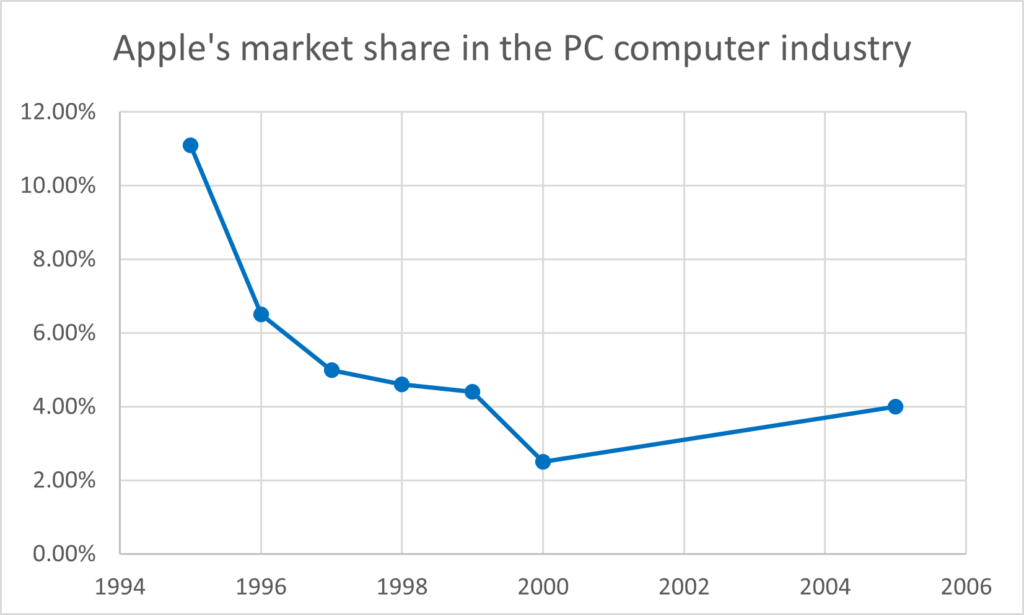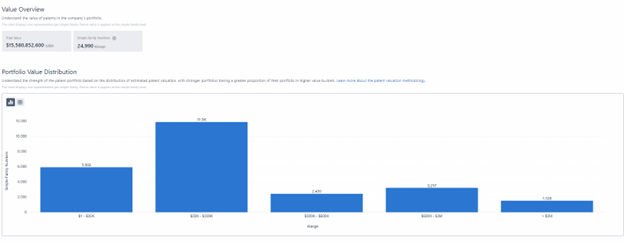
It’s no secret that the global economy is struggling to rebound in a post-pandemic world. With the war in Ukraine, elevated inflation, soaring interest rates, and supply chain issues a recession doesn’t just seem likely — it seems inevitable.
Although this might seem like bad news, it may be an opportunity in disguise for forward-thinking companies. More than half of the companies sitting on the Fortune 500 list — including General Motors, Microsoft, HP, AT&T, MTV, and Disney — were launched during a recession or bear market.
In this article we’ll examine why innovating during a recession is important, how it fuels growth, and outline lessons and success stories.
Let’s get started!
What is a Recession?
A recession is defined as: “two consecutive quarters of negative economic growth – they can be caused by economic shocks (I.e., a spike in oil prices), financial panics (such as the one that preceded the Great Depression), rapid changes in economic expectations, or some combination of the three. Most firms suffer during a recession, primarily due to declines in demand and uncertainty about the future – but research shows that there are ways to mitigate the damage.”
Simply put, a recession is a time marked by financial uncertainty which leads to a decrease in expenditures and productivity. Rather than spend, consumers opt to save. This creates a ripple effect in the market where demand decreases, and companies tighten their budgets and try to play it safe. But sometimes the seemingly safe route is anything but…
Innovating During a Recession
When dealing with an economic crisis, many leaders focus on saving money in the short term to minimize losses. This includes scaling back the production of new products, laying off staff, and making budget cuts. Although it’s important to be conscious of spending, companies that decide to take the path less traveled are often the ones that come out on top.
Data pooled from the early 1980s, ‘90s, 2000s, and the Great Recession shows that companies that invested in innovation during economic downturns improved their position relative to their competitors during the recovery period. What’s more, researchers found the effect of past recession research and development (R&D) is much stronger and statistically significant in industries with high technological opportunities and in highly competitive industries. For example, research from McKinsey & Co observed organizations that maintained their innovation focus through the 2009 financial crisis emerged stronger, outperforming the market average by more than 30% and continued to deliver accelerated growth through the subsequent three to five years.
Successes and Lessons from Past Recessions
The dot-com bubble burst led to a recession in early 2001, where the S&P 500 dropped by 17%. More recently, the Great Recession, which began in December 2007 and ended in June 2009, saw the S&P 500 drop by a whopping 60.3%.
Despite these downturn periods, global patent application trends remain strong — growing year over year. As the chart below illustrates, innovation continued during the 2007 to 2009 time period.

Apple, Amazon, and Domino’s aren’t just household names, they’re also great examples of how to thrive during a recession. These three companies were able to grow significantly faster than the rest of the market due to their strategic focus on innovation during and after recession periods. Their post-crisis growth can be attributed to ideating new products during the recession.
Here are some of the remarkable during and post-recession products launched by these companies:
- In April 2001, amid the recession, Apple released its first iPod
- In July 2002, Amazon launched its AWS platform amid the Dot Com Bubble Burst, and between 2006 and 2008 during the Great Recession, the company released Amazon Prime, Amazon Kindle and their hosting services on AWS
- In December 2009, Dominos reinvented its pizza recipe, a mere six months after the Great Recession ended
Instead of just trying to stay afloat, these companies analyzed how periods of stagnation impacted their consumers. Then they took it upon themselves to understand the new pain points that arose and innovated to solve them. By listening to their consumers, they were able to capture greater market share in the short- and long-term.
Starting a business from scratch is no small feat, and economic downturns can create even more obstacles. But, if history proves to be any sort of reliable predictor, recessions have served as the launchpad for some of the world’s most well-known businesses.
Businesses that boomed during recession periods:
- Mailchimp: Founded in 2001 after the burst of the dot com bubble, MailChimp was created to support small businesses with their email software needs. These days, the company serves a wide-range of clients, from smaller companies to large enterprise organizations, and is valued at $12 billion.
- Uber: Like many great ideas, the concept for Uber was born from a pain point — two people struggling to find a ride from point A to point B. Founded in 2009, Uber grew from a small app to a ridesharing giant with more than 10 billion global trips completed.
- Square: Founded in 2009 as a mobile payment device for credit cards for small vendors, merchants, and businesses, Square is now worth a whopping $26 billion. The company has also expanded into other ventures including the Cash App to transfer money.
Apple’s Success Story – Going Against All Odds
In the late ‘90s, Apple rapidly lost market share to Windows PC after the company launched Windows 95. Then in April 1997, Apple reported a first-quarter loss of $740 million, the largest quarterly loss In Silicon Valley history. Despite multiple new launches, the 2000 dot-com bust drove stock prices down further.
Through it all, Steve Jobs persevered. He remained laser-focused on innovation, with his vision to make Apple a “digital hub” close at hand. And in 2001, this vision became a reality when Apple launched iTunes and its iPod. These new technologies revolutionized how consumers listen to music.

The iPod innovation ended up being instrumental in Apple’s success for three reasons.
- Within a decade Apple sold more than 250 million iPods. As a result, the company was able to rapidly expand into new global markets.
- The iPod was the first Apple product that many consumers used. While it was a premium product, it also fit into an affordable leisure spend, and its introduction opened up exploration to other products.
- The launch of iTunes and the iPod resulted in the start of an ecosystem. Without iTunes, there would be no iPod, and without the iPod there would be no iPhone, and thereafter the iPad. It paved the way for more innovations and encouraged interlinkages, transferability, and a safe ecosystem to store music, data, movies, etc.

After a few slower years, Apple took off in 2005 and captured 70% of the market share in the portable music player industry. The company continued to grow despite subsequent recessions and was dubbed “recession proof.”
Apple’s success is due to the company’s ability to innovate regardless of external circumstances, propel its vision forward, and continue to improve user experiences for customers around the world. The company transitioned from a struggling PC manufacturer to a software and hardware powerhouse. It’s the first company in history to be valued at $1 trillion dollars, owning a patent portfolio worth over $15 billion.
As Apple illustrates, ongoing innovation, especially during recession periods, is key to long-term success.
Conclusion
Economies adapt and move forward, they always have and always will. Staying strategic and innovative throughout allows you to increase your chances of short- and long-term success. Instead of panicking, focus on understanding how consumer preferences are changing and pain points are shifting, then innovate to solve them.
